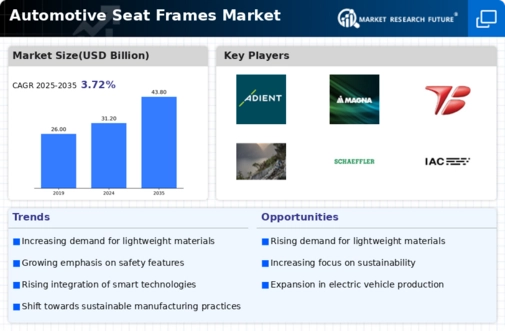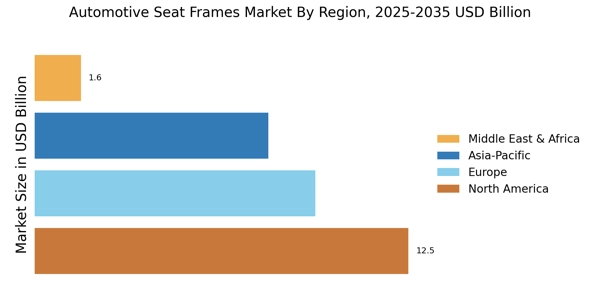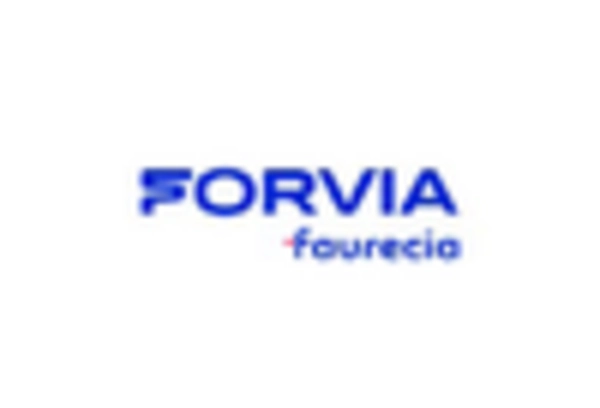Automotive Seat Frames Market Summary
As per MRFR analysis, the Automotive Seat Frames Market Size was estimated at 31.18 USD Billion in 2024. The Automotive Seat Frames industry is projected to grow from 32.13 USD Billion in 2025 to 43.49 USD Billion by 2035, exhibiting a compound annual growth rate (CAGR) of 3.07 during the forecast period 2025 - 2035.
Key Market Trends & Highlights
The Automotive Seat Frames Market is experiencing a transformative shift towards lightweight materials and smart technologies.
- The adoption of lightweight materials is becoming increasingly prevalent, particularly in North America, to enhance fuel efficiency.
- Customization and personalization of seat frames are gaining traction, reflecting consumer preferences for unique vehicle interiors.
- Integration of smart technologies in seat frames is on the rise, driven by advancements in automotive electronics and consumer demand for connectivity.
- Rising demand for electric vehicles and increased focus on safety standards are key drivers propelling market growth, especially in the Asia-Pacific region.
Market Size & Forecast
| 2024 Market Size | 31.18 (USD Billion) |
| 2035 Market Size | 43.49 (USD Billion) |
| CAGR (2025 - 2035) | 3.07% |
Major Players
Adient (US), Lear Corporation (US), Faurecia (FR), Toyota Boshoku (JP), Magna International (CA), Tachi-S (JP), IAC Group (US), Seoyon E-Hwa (KR), Kongsberg Automotive (NO)


















Leave a Comment